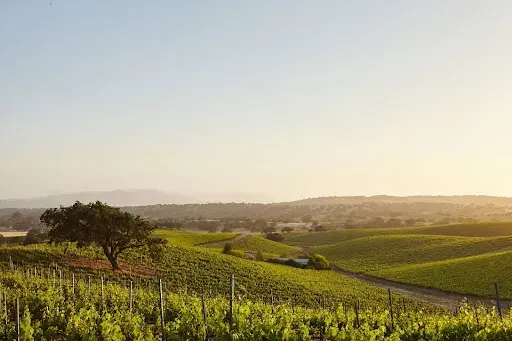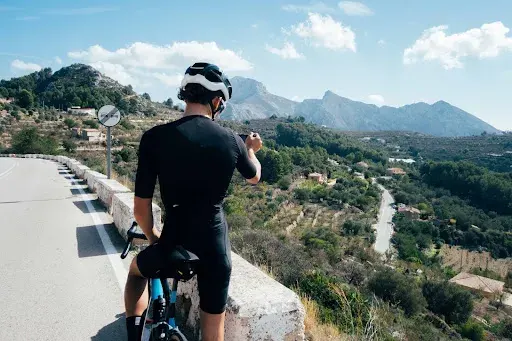
Discover Douro Valley by Bike: Wine, Views & Quiet Roads
Admin
July 3, 2025
750 words
4 minutes
Portugal’s Douro Valley is a region made for slow travel. With its terraced vineyards, winding riverside roads, and quiet villages, cycling here offers something special: the chance to truly soak in the rhythm of wine country. Whether you’re gliding past grape harvests in September or pedaling through spring blossoms, the Douro invites you to pause, taste, and take your time.
What Makes the Douro Valley a Unique Cycling Destination
The Douro Valley, a UNESCO World Heritage site, is best known for its Port wine and dramatic scenery. The landscapes feel hand-carved: steep slopes, vineyard terraces, and shimmering river bends that surprise you at every turn. It’s one of the oldest demarcated wine regions in the world, shaped by centuries of winemaking and agricultural traditions.
Unlike the busy coastlines, the Douro moves at a slower pace. Traffic is light on many of the valley’s roads, especially between smaller villages like Sabrosa, Alijó, and Pinhão. That makes it ideal for both guided and self-guided cycling tours, especially for those seeking quiet, scenic routes with cultural depth.
Starting in Porto: Gateway to the Douro
Before the vineyards begin, there’s Porto—a city rich in maritime history and tile-covered charm. Many cycling tours begin here, offering a day or two to explore its UNESCO-listed old town and the famous wine cellars of Vila Nova de Gaia.
Must-See Stops in Porto
- Ribeira District: Colorful riverside streets with cafes and traditional boats.
- São Bento Station: One of Portugal’s most famous train stations, lined with 20,000+ azulejo tiles.
- Port Wine Cellars: Learn about port’s legacy before tasting a glass at the source.
Leaving the city, riders quickly transition from urban roads to quieter routes tracing the Douro River inland.
Riding Through the Heart of the Douro
Once in the valley, the terrain becomes more dramatic. Vineyards cling to hillsides, and the river curves through deep green valleys. The famous N222 road, connecting Peso da Régua to Pinhão, offers wide views and smooth cycling conditions.
The N222: Douro’s Iconic Cycling Route
This scenic stretch is perfect for intermediate cyclists, with modest elevation changes and plenty of viewpoints. Along the way, expect stops at family-run wine estates and miradouros—hilltop lookouts that capture the scale of the valley.
In Pinhão, a hub for wine lovers, you can pause for a tasting or explore the tiled train station that depicts the valley’s agricultural history. From here, longer routes lead to São João da Pesqueira or Vila Nova de Foz Côa, offering a deeper look at the region’s rural charm.
Where Wine and Cycling Meet
A Douro Valley bike trip wouldn’t be complete without time to taste the region’s famous wines. Many routes pass quintas—traditional wine estates—offering guided tastings and even overnight stays.
Popular Wine Experiences for Cyclists
- Quinta do Crasto: Known for its bold reds and river-view infinity pool.
- Quinta da Pacheca: Offers tastings, meals, and accommodations in wine barrels.
- Quinta do Vallado: Combines historic architecture with a sleek modern winery.
Beyond wine, local flavors await at every turn. From fresh river fish to traditional migas and cabrito assado, food in the Douro is hearty, honest, and perfect after a day’s ride.
Planning Your Trip: Weather and When to Go
Timing matters when planning a cycling trip in the Douro. Spring (March to May) brings blooming flowers and mild weather, while autumn (September to October) delivers golden vineyards and grape harvest scenes.
Tips for Each Season
- Spring: Ideal for comfortable riding and fresh scenery.
- Summer: Scenic but hot—early starts are best.
- Autumn: Harvest time adds cultural richness and photo opportunities.
Winter is quieter and cooler, but some tourist services may be limited outside of the main towns.

Self-Guided or Guided: What’s Best for You?
Both guided and self-guided options are available in the Douro. A guided tour offers the benefit of local insight, while self-guided tours provide freedom and flexibility—plus support for luggage transfers and pre-booked stays.
What to Expect on a Self-Guided Douro Tour
- GPS navigation or printed route maps
- Daily luggage transfers between accommodations
- Support in case of mechanical issues or emergencies
- Pre-selected scenic and quiet cycling routes
Either way, it’s easy to tailor the ride to your comfort level and interests.
Final Thoughts: A Journey to Remember
Cycling through Douro Valley wine country is more than a ride—it’s a full-sensory experience. You’ll pedal past centuries-old vineyards, pause for views that feel like paintings, and enjoy some of Portugal’s best food and wine along the way.
For travelers who prefer unhurried days, cultural immersion, and scenic exploration, the Douro Valley is one of Portugal’s most rewarding places to explore by bike.